Key takeaways:
- Storytelling in marketing creates emotional connections and humanizes brands, making audiences feel understood.
- Effective storytelling techniques include relatable characters, evoking strong emotions, and maintaining authenticity to foster trust and loyalty.
- Understanding your audience through research and engagement is crucial for crafting narratives that resonate on an emotional level.
- Personal stories and vulnerabilities can significantly enhance engagement, build community, and drive marketing success.
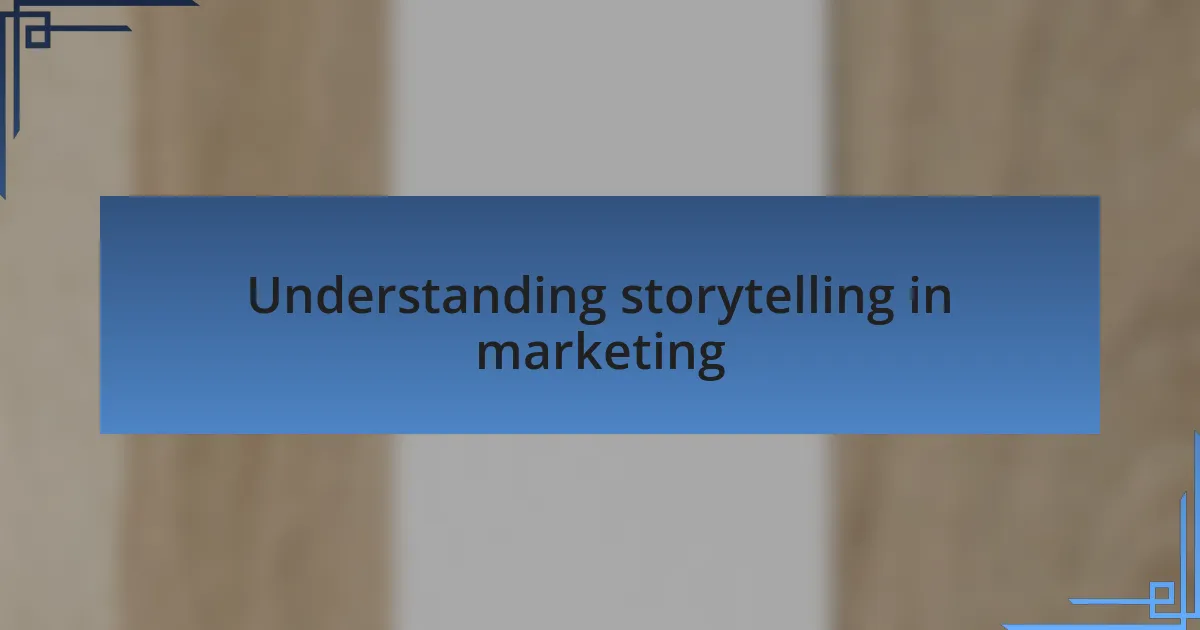
Understanding storytelling in marketing
Storytelling in marketing isn’t just about crafting a message; it’s about creating an experience that resonates emotionally with your audience. I remember a campaign I worked on where we shared a customer’s journey with our product. The moment we humanized our brand by showing real struggles and triumphs, the engagement rates skyrocketed. It made me realize how powerful stories can evoke emotions and connect people.
Think about it: What draws you into a movie or a book? It’s the character, the challenges they overcome, and how their story mirrors our own experiences. That’s the essence I bring into my marketing strategies. When I shared stories that reflected our audience’s pain points and dreams, I noticed they no longer saw us merely as a business, but as a brand that truly understands them.
Moreover, storytelling allows brands to stand out in a crowded market. I once pitched a digital ad campaign that began with a simple yet compelling story about innovation and growth. We didn’t just present facts; we wove a narrative that highlighted our mission. This shift in approach ignited conversations and fostered deeper connections with potential clients, proving that a good story can be the backbone of a successful marketing strategy.
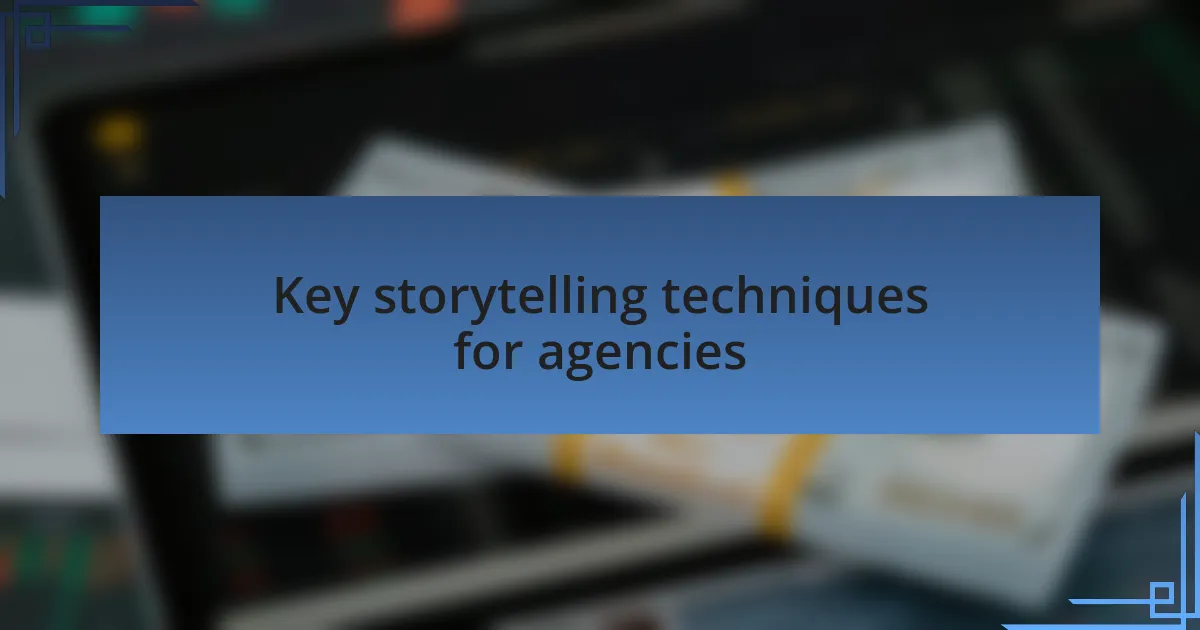
Key storytelling techniques for agencies
To effectively harness storytelling techniques, agencies should focus on creating relatable characters. In one campaign, we developed a protagonist who mirrored the struggles of our target audience. This connection not only made the story appealing but also encouraged viewers to see themselves in that character’s journey, prompting them to engage with our brand on a deeper level.
Another crucial technique is to evoke strong emotions through conflict and resolution. I once worked on a project highlighting the tension between a client’s aspirations and the obstacles they faced. The resolution showcased how our agency helped turn their vision into reality. The result? A compelling narrative that inspired trust and loyalty, making our services more desirable.
Lastly, it’s important to maintain authenticity in storytelling. I learned this the hard way when we tried to embellish a client’s success story. Instead of the expected boost, we received backlash for being disingenuous. The lesson here is clear: people can sense when a story isn’t real. Authenticity fosters connections that resonate, creating a foundation for lasting relationships with clients.

How to identify your audience
Understanding your audience is a fundamental step that can influence the direction of your marketing strategy. I remember when we launched a campaign targeting young professionals; it quickly became evident that thoroughly researching their daily habits and preferences made all the difference. By analyzing social media interactions and conducting surveys, we gained insights into not just who they were, but what they valued, which guided our storytelling approach significantly.
Engaging with your audience isn’t just about demographic data—it’s also about the emotions that drive their decisions. I once attended a focus group where participants candidly shared their frustrations with brands that didn’t understand their needs. This experience was eye-opening for me; it showed how deep understanding humanizes your approach. So, ask yourself: how do you want your audience to feel when they interact with your brand? The answers can shape your narrative in a meaningful way.
Another effective method for identifying your audience is by creating detailed personas based on the insights you gather. In one project, we developed personas that represented different segments of our target market. These personas included their goals, challenges, and aspirations, allowing us to craft stories that resonated on an emotional level. It struck me how this approach made our marketing much more targeted. When your audience feels represented, they’re not just passive consumers; they become part of your story.
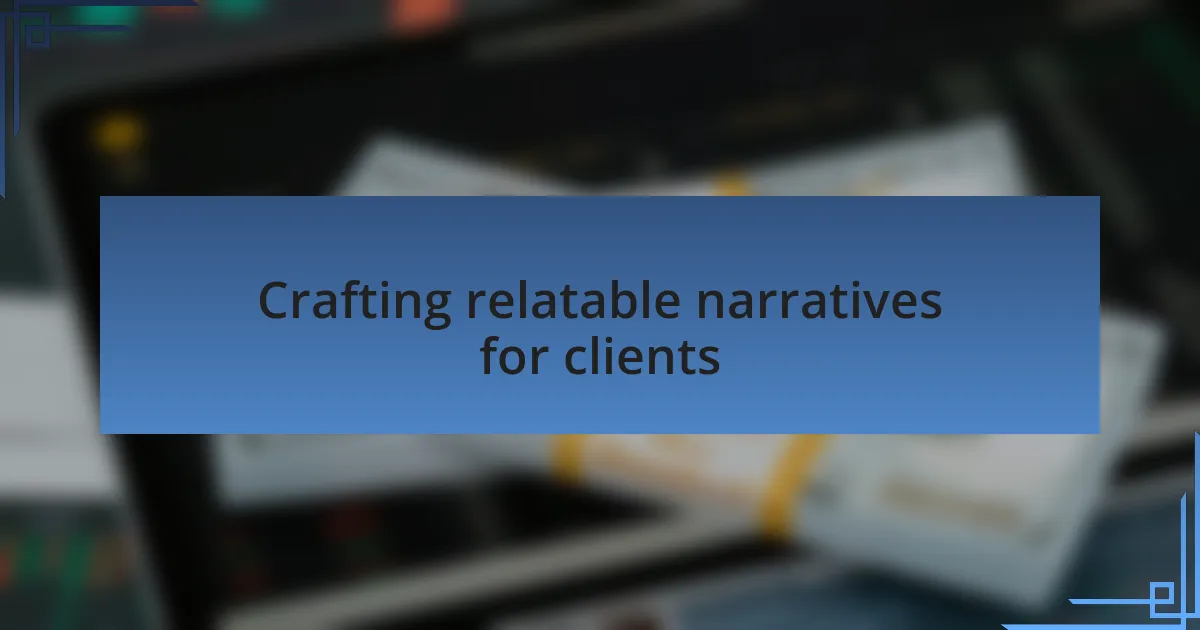
Crafting relatable narratives for clients
Crafting relatable narratives begins with tapping into the authentic experiences of clients. There was a time when we developed a campaign for a local bakery, and instead of focusing solely on their products, we shared the story behind the owner’s passion for baking, stemming from childhood memories in her grandmother’s kitchen. This connection not only humanized the brand but allowed customers to feel a personal bond, making them more likely to choose that bakery over competitors.
I’ve found that weaving in relatable challenges or triumphs can create a genuine resonance with the audience. During a project for a fitness trainer, we highlighted her journey from struggling with health to achieving her goals. It was compelling to see how clients connected with her story, often sharing their own struggles in response. It really got me thinking: how often do we underestimate the power of vulnerability in storytelling?
Emotion plays a critical role in making narratives relatable, which I’ve observed firsthand. While working on a campaign for a non-profit, we shared testimonials from individuals whose lives changed due to the organization’s work. The heartfelt stories not only touched the audience but also inspired them to engage and contribute. This made me realize that when narratives resonate emotionally, they not only attract attention but also kindle a desire to take action. Are we truly harnessing that potential in our craft?
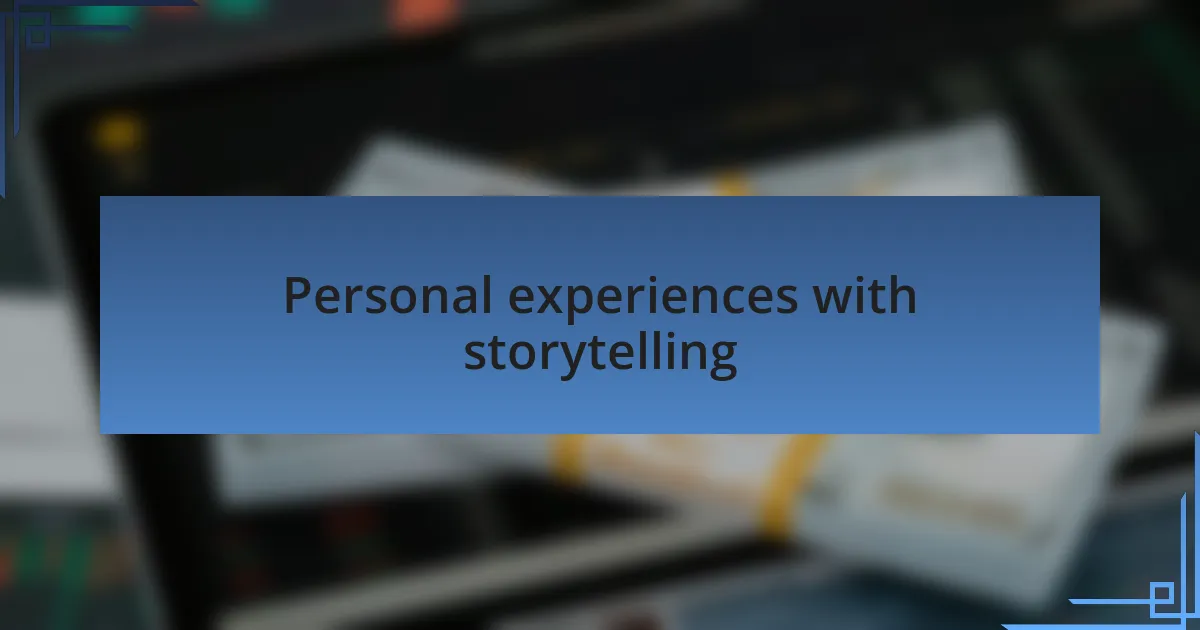
Personal experiences with storytelling
Storytelling has always been a powerful tool in my work; I remember a project where we collaborated with a small local artist. Instead of just showcasing her artwork, we delved into her life experiences that inspired each piece. As I listened to her share the struggles and joys of her artistic journey, it struck me how those personal insights made her art much more relatable. It led me to ask myself: how often do we miss the opportunity to reveal our clients’ unique stories?
Another memorable instance occurred when we created a video series for a tech startup. I suggested focusing on the founder’s journey and the late nights filled with doubt and ambition. As I crafted the script, the emotion behind his words felt tangible; it was as though we were inviting the audience into his world. The reception was thrilling, as viewers reached out to share their stories of perseverance, reinforcing my belief that sharing our vulnerabilities can forge deeper connections.
Engaging with storytelling techniques has led me to discover the profound impact of authenticity. I recall working on a campaign for a local charity, where we incorporated stories from volunteers who shared their personal reasons for getting involved. Hearing their passion and commitment not only drew people to the cause but also stirred something within me. It made me wonder—could we elevate every brand story by weaving in the heartfelt reasons behind what they do?
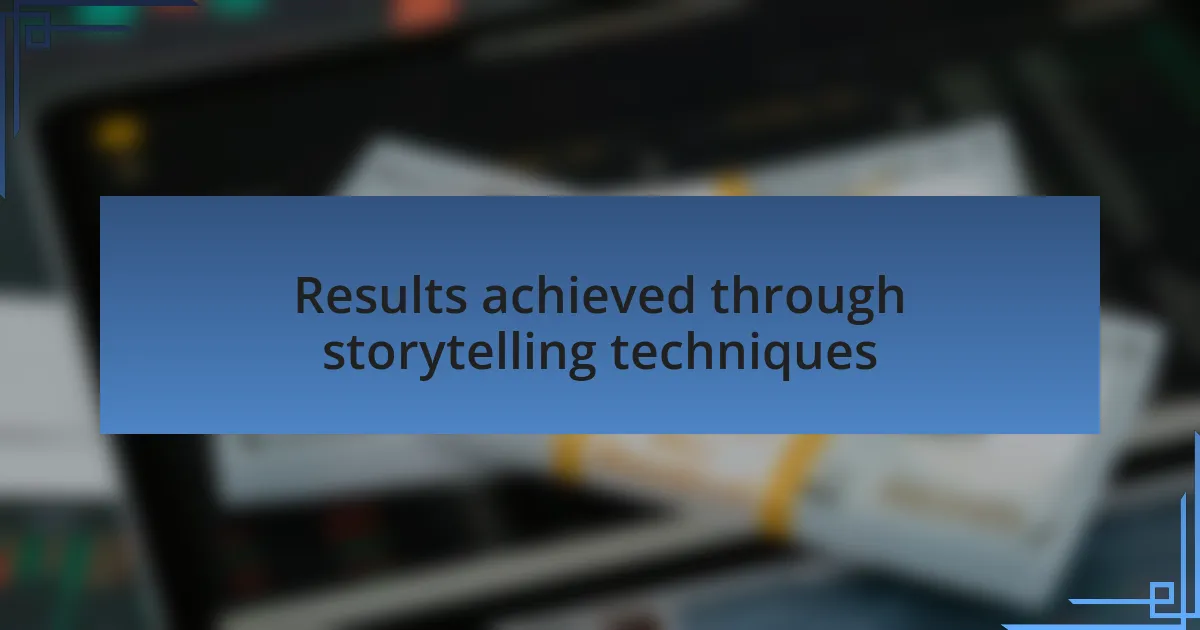
Results achieved through storytelling techniques
The results achieved through storytelling techniques can be truly transformative. I recall launching a campaign for a sustainable fashion brand that prioritized personal narratives from customers. By showcasing their journeys toward eco-conscious living, we didn’t just sell clothing—we sparked a movement. The engagement rate soared; people felt connected not only to the brand but also to one another, creating a community united by shared values.
In another instance, I worked on a newsletter for a wellness company where we shared client success stories that included personal struggles and triumphs. The response was overwhelmingly positive. Recipients didn’t merely read the testimonials; many reached out to share their own experiences, turning our small marketing effort into an ongoing dialogue. Isn’t it fascinating how personal storytelling can break down barriers and encourage open communication?
The financial impact of implementing storytelling techniques can be significant as well. For a campaign targeting young professionals, we decided to feature relatable stories that mirrored their aspirations and challenges. The result? A dramatic increase in conversions. I often wonder how stories anchored in real experiences can guide potential customers through their decision-making process. It’s remarkable to see how sharing vulnerability can lead to increased trust and ultimately drive sales.